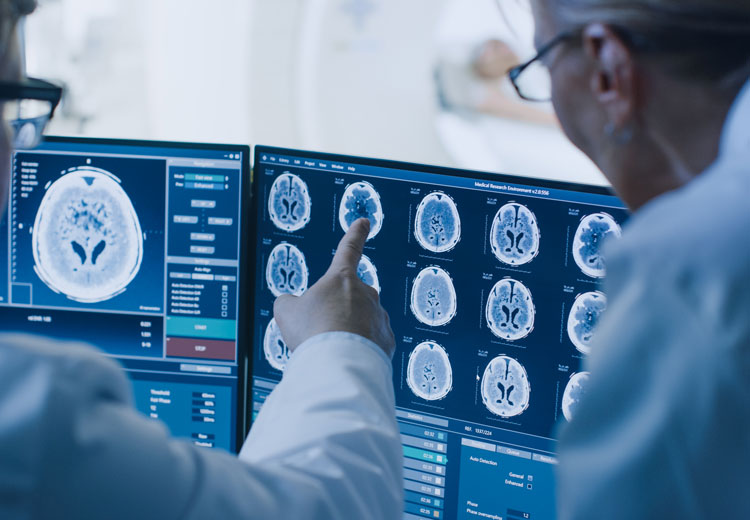How academic research is helping to improve brain health

Sponsored by

For decades, Juri Gelovani’s work has examined how the imaging of epigenetic gene regulation can help with the treatment of cancer, neurological diseases and other health conditions
Having been involved in the study of neurology for more than 30 years, Juri Gelovani has watched the field develop markedly. Gelovani himself has played an important role in this regard, launching a new field of research called epigenetic molecular imaging in the mid-2000s.
Epigenetics concerns the heritable changes to a gene function that do not alter an organism’s DNA sequence. In other words, epigenetics regulate gene activity and expression where they are not dependent on the gene sequence. Epigenetic molecular imaging, therefore, is a method of visualising these regulatory mechanisms in real time, non-invasively and repetitively.
The need for imaging epigenetic gene regulation came about because of the FDA’s approval of the histone deacetylase (HDCA) inhibitor vorinostat for the treatment of cutaneous T-cell lymphoma, a rare type of cancer that affects white blood cells. However, as there was no data regarding the biochemical, physiologic and molecular effects of vorinostat on the body when used to treat other cancers in other organs and tissues, it meant a potentially life-saving treatment could not be used.
With this in mind, Gelovani’s research focused on the development of novel agents for imaging the expression-activity of HDACs. Specifically, his team started to develop class IIa and Class III HDAC imaging agents because of the importance of these classes of enzymes in the development and progression of cancer. This research programme was initially supported by the pharmaceutical industry, including multinational pharmaceutical company Merck, and then by grants from the US National Institutes of Health.
Over the past decade, Gelvani’s research programme has produced four novel patented 18F-radiolabeled compounds for positron emission tomography (PET) imaging of HDAC enzymes class IIa and class III. Using these compounds, Gelovani’s team has conducted PET and MRI studies in rats and non-human primates, resulting in more than 20 papers published in top scientific journals. These novel PET imaging agents allow for a non-invasive assessment of the localisation and activity of epigenetic processes regulated by these enzymes in the normal brain and brain tumours, as well as the monitoring of treatment responses with enzyme-specific inhibitors or activators.
Using MRI and PET with these agents, Gelovani’s team, in collaboration with colleagues at the National Yang-Ming University in Taiwan, has demonstrated a gradual increase in the activity of HDAC class IIa enzymes in the brain during the progression of Alzheimer's disease. This important discovery has led to the development of novel treatments using HDAC class IIa specific inhibitors.
Gelovani’s vital work has been years in the making. His personal academic journey began after moving from his native Georgia to study medicine at the University of Tartu in Estonia, where he pursued a clinical specialisation in neurosurgery. Developing cutting-edge treatments to tackle different types of cancers has been a key focus of Gelovani’s work, and has seen him take up positions at leading comprehensive cancer centres around the world. His research has also covered the diagnosis and treatment of traumatic brain injuries and Alzheimer’s disease.
His future research plans include the development of additional class and isotype-specific HDAC imaging agents and the translation of already developed agents into the clinic. Such work will undoubtedly bring the medical community one step closer to developing individualised treatments and eliminating some of the most debilitating conditions affecting our health today.
Find out more about Juri Gelovani’s work.